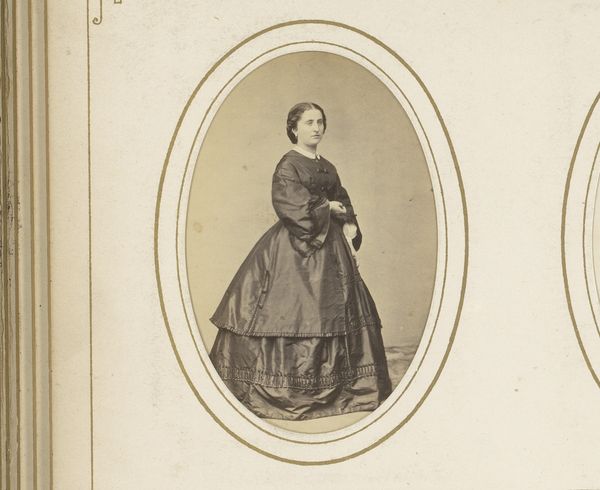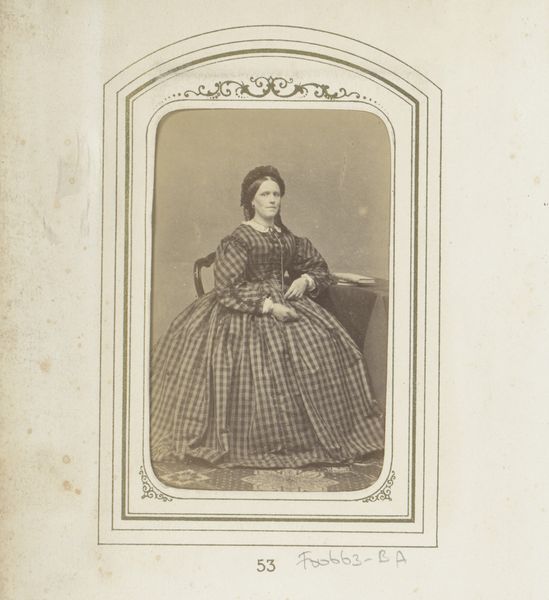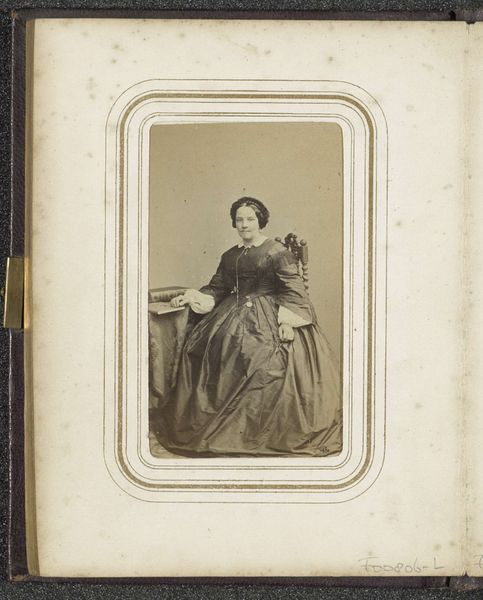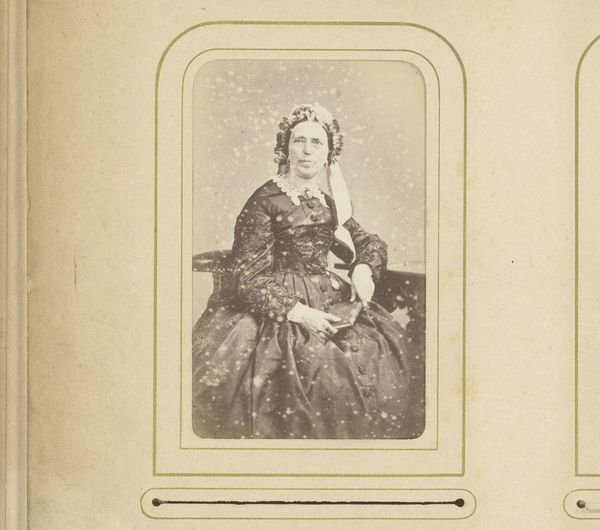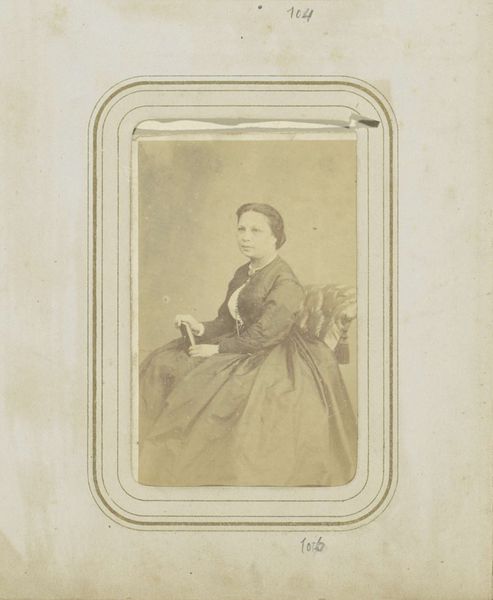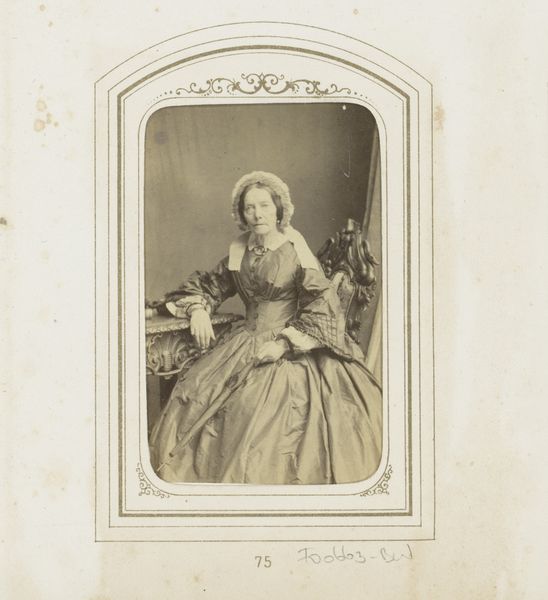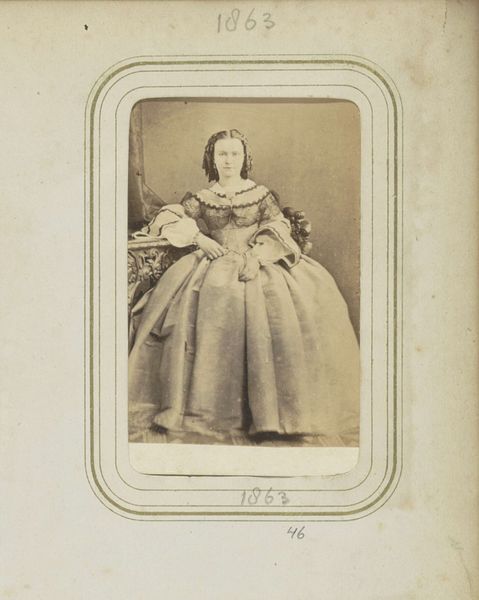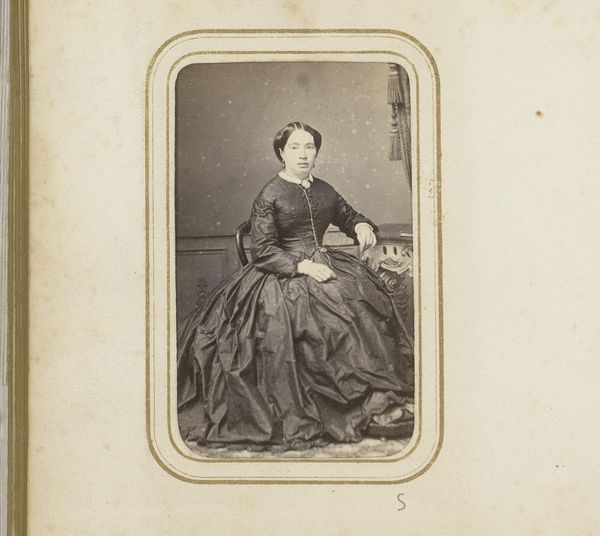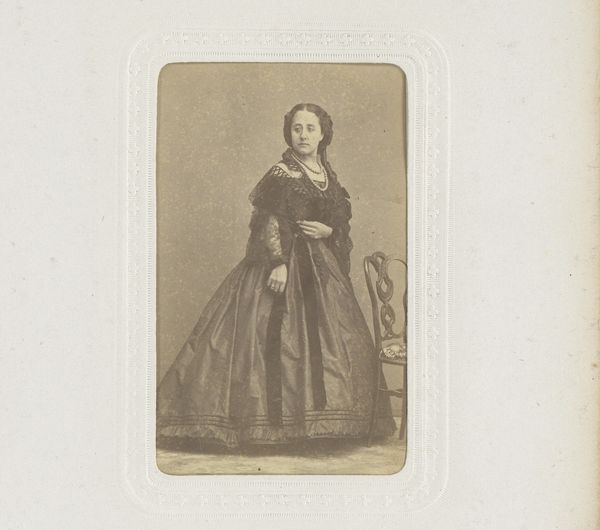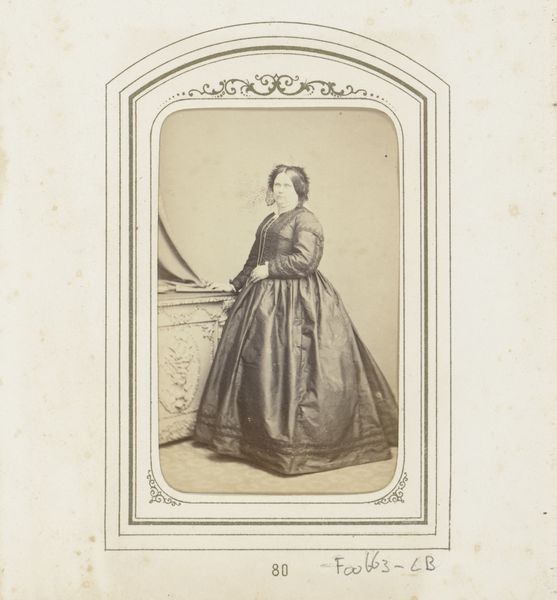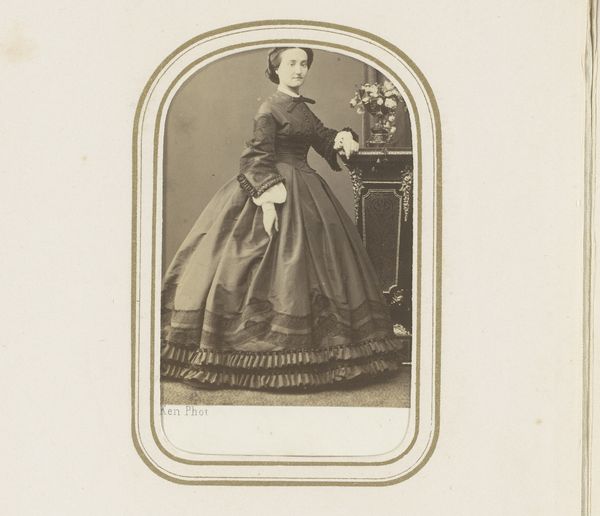
Portret van een vrouw in een jurk met een baby op schoot c. 1857 - 1880
woodburypage
Rijksmuseum
photography
portrait
aged paper
still-life-photography
toned paper
photography
dress
Dimensions: height 93 mm, width 58 mm, height 97 mm, width 62 mm
Copyright: Rijks Museum: Open Domain
Curator: Looking at this old photograph is like peering through a time portal, isn't it? Woodbury & Page captured "Portret van een vrouw in een jurk met een baby op schoot" sometime between 1857 and 1880. Editor: It has such a ghostly, ethereal quality, almost like a daguerreotype left out in the attic. The subdued tonality really gives it that aged effect. Curator: It's on toned paper, so the warmth and fading you observe comes from deliberate manipulation of the chemicals during processing, highlighting certain visual elements. Photography in this era became far more than documentation; the photographers carefully manufactured emotional narratives. Editor: Definitely! Look at the details on that dress. So much fabric—must have been so heavy! I wonder how many hours it took to make a dress like that back then. There's an overwhelming feeling of weight, and I don't just mean the dress! The burden of motherhood perhaps, or the societal expectations of the time. Curator: Absolutely, the material realities tell a story. Consider the elaborate craftsmanship versus the relatively low cost of photographic reproduction even then; this tension highlights changing societal values, mass culture versus individual creation, luxury versus practical use...The dress symbolizes wealth and status. Editor: And the baby seems so serious, almost doll-like in its crisp white clothes against the mother’s dark dress. It is a compelling combination. I wonder what their lives were really like outside of this carefully posed image? Curator: We can see this as a reflection of social structures in the Dutch East Indies; their work frequently catered to wealthy elites and colonial administrators wanting to present themselves in specific ways. The means of production reveals the social context in which their art operated. Editor: Yes, the photograph serves as a crafted performance of wealth and the conventions of Victorian motherhood. Looking closely, you can sense a certain weariness in her eyes. Makes me think about my own experiences. Curator: A compelling reminder of the way material culture intersects with human stories! Thanks for sharing that, it’s always fascinating exploring how art reflects—and shapes—our world.
Comments
No comments
Be the first to comment and join the conversation on the ultimate creative platform.

